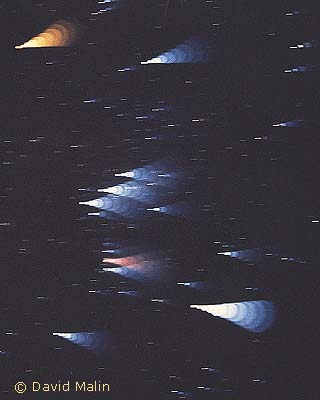Where am I?
Re: Where am I?
haha, it doesn't matter, Ann, if it was a blue star or not. I went as far as i could. I just can't think of any blue nebulas. When it's revealed, I'll probably say, oh, that. But i just don't have enough of a conscious remembrance about details of space stuff to 'get-it'. The ol' noggin is just too full of other things. 
To find the Truth, you must go Beyond.
Re: Where am I?
Well that's really neat, Ann  A blue sad snowman with a snowflake tear and a very red cardinal on it's shoulder. For me... zilch, nada, zero. But for someone else... who knows.
A blue sad snowman with a snowflake tear and a very red cardinal on it's shoulder. For me... zilch, nada, zero. But for someone else... who knows.
To find the Truth, you must go Beyond.
Re: Where am I?
If you are a nebula, do you reflect or emanate?
- starstruck
- Science Officer
- Posts: 177
- Joined: Sat Sep 17, 2011 9:37 am
Re: Where am I?
Vaguer . . . no, I meant to say Vega!!
- MargaritaMc
- Look to the Evenstar
- Posts: 1836
- Joined: Wed Jan 09, 2013 10:14 pm
- Location: 28°16'7"N 16°36'20"W
Re: Where am I?
http://annesastronomynews.com/annes-pic ... -ngc-1491/
Am I warm??
Margarita
Ps - the blue isn't as blue on this copy as on the original that I saw but the original is too big to link. And is by a different photographer!
http://www.space.com/20113-blue-nebula- ... photo.html
This is a link to a stunning image by Bill Snyder
Margarita
Ps - the blue isn't as blue on this copy as on the original that I saw but the original is too big to link. And is by a different photographer!
http://www.space.com/20113-blue-nebula- ... photo.html
This is a link to a stunning image by Bill Snyder
"In those rare moments of total quiet with a dark sky, I again feel the awe that struck me as a child. The feeling is utterly overwhelming as my mind races out across the stars. I feel peaceful and serene."
— Dr Debra M. Elmegreen, Fellow of the AAAS
Re: Where am I?
Unfortunately you are quite cold, Margarita! And since NGC 1491 is an emission nebula and dominated by red Ha emission, I personally would never call it blue.
The object I'm asking for is indeed an emission nebula, but a special kind of emission nebula and not a red one!
Here's a cold clue:
Source: http://www.ranaldofamily.com/fun_stuff/ ... owball.htm
Ann
The object I'm asking for is indeed an emission nebula, but a special kind of emission nebula and not a red one!
Here's a cold clue:
Source: http://www.ranaldofamily.com/fun_stuff/ ... owball.htm
Ann
Color Commentator
- MargaritaMc
- Look to the Evenstar
- Posts: 1836
- Joined: Wed Jan 09, 2013 10:14 pm
- Location: 28°16'7"N 16°36'20"W
Re: Where am I?
Well, I am completely out of ideas! And the clue just made me even more puzzled.
Margarita
Margarita
"In those rare moments of total quiet with a dark sky, I again feel the awe that struck me as a child. The feeling is utterly overwhelming as my mind races out across the stars. I feel peaceful and serene."
— Dr Debra M. Elmegreen, Fellow of the AAAS
Re: Where am I?
I defer.
Know the quiet place within your heart and touch the rainbow of possibility; be
alive to the gentle breeze of communication, and please stop being such a jerk. — Garrison Keillor
alive to the gentle breeze of communication, and please stop being such a jerk. — Garrison Keillor
Re: Where am I?
WOW, there really is a Blue snowball nebula.
Click to play embedded YouTube video.
To find the Truth, you must go Beyond.
- starstruck
- Science Officer
- Posts: 177
- Joined: Sat Sep 17, 2011 9:37 am
Re: Where am I?
Oh well, I tried, but I now see I was barking up the wrong tree / astronomical object !! . . . not even close!
I have never heard of the Blue Snowball Nebula! This game is way beyond my abilities! . . but not beyond Beyond's
I have never heard of the Blue Snowball Nebula! This game is way beyond my abilities! . . but not beyond Beyond's
Re: Where am I?
Let me explain my clues. I wrote:
So why is a planetary nebula described as a snowball? Well, your guess is as good as mine!
Ann
The Blue Snowball is a planetary nebula, a brilliant blue-green OIII-dominated nebula ionized by an extremely hot white dwarf. White dwarfs are "dead stars", hot burnt-out stellar cores which radiate heat and light, but can't generate any new energy. Their extreme ultraviolet radiation ionizes their cast-off outer layers and makes them shine either red or blue-green, or both. The Blue Snowball is predominantly the blue-green kind. I would guess that the progenitor of the Blue Snowball was more massive than the Sun and therefore blue back when it was a normal star (since I regard all stars hotter than the Sun as blue), but I can't be sure of the progenitor's main sequence spectral class.They say I'm blue
but I don't know
I'm past my prime
but in my time
I was blue, oh, oh!
At least I think so.
Can't really remember
cause I'm a member
of the living dead!
So why is a planetary nebula described as a snowball? Well, your guess is as good as mine!
Ann
Color Commentator
- MargaritaMc
- Look to the Evenstar
- Posts: 1836
- Joined: Wed Jan 09, 2013 10:14 pm
- Location: 28°16'7"N 16°36'20"W
Re: Where am I?
I sometimes browse the Apod archives - and I now have a program that can crop images...
Margarita
Margarita
"In those rare moments of total quiet with a dark sky, I again feel the awe that struck me as a child. The feeling is utterly overwhelming as my mind races out across the stars. I feel peaceful and serene."
— Dr Debra M. Elmegreen, Fellow of the AAAS
Re: Where am I?
Spending time in the APOD archives  A program that crops images
A program that crops images 
 My brain is already tired from realizing the things that you are going to be coming up with for us to figure out.
My brain is already tired from realizing the things that you are going to be coming up with for us to figure out. 
Your first clue looks familiar, but that's about it for me. I don't even remember why the image looks like that.
Your first clue looks familiar, but that's about it for me. I don't even remember why the image looks like that.
To find the Truth, you must go Beyond.
Re: Where am I?
Well, the picture you are asking about is clearly a crop of a picture photographed in such a way as to make stars progressively "blurrier" and thus bring out their colors more clearly.
I did a quick search for your picture, Margarita, but I couldn't find it. However, David Malin pioneered a similar technique. This is his picture of Orion. It is very popular to photograph Orion with this particular technique, due to the fact that Betelgeuse will stand out so nicely orangeish among all the blue stars, and the Orion Nebula will look deliciously pink, too. That's why I think that your picture, too, might feature Orion, and the star we are looking at just might be Rigel.
It the picture is not a crop of Orion, then my guess would be that it is a crop of Crux, the Southern Cross. We might be looking at Acrux.
Ann
I did a quick search for your picture, Margarita, but I couldn't find it. However, David Malin pioneered a similar technique. This is his picture of Orion. It is very popular to photograph Orion with this particular technique, due to the fact that Betelgeuse will stand out so nicely orangeish among all the blue stars, and the Orion Nebula will look deliciously pink, too. That's why I think that your picture, too, might feature Orion, and the star we are looking at just might be Rigel.
It the picture is not a crop of Orion, then my guess would be that it is a crop of Crux, the Southern Cross. We might be looking at Acrux.
Ann
Color Commentator
Re: Where am I?
Is it the complete picture or a part of it?
Re: Where am I?
It is just a part of a picture. Margarita said that she has a program that can crop images, that means cut details, out of larger pictures.
Ann
Ann
Color Commentator
- MargaritaMc
- Look to the Evenstar
- Posts: 1836
- Joined: Wed Jan 09, 2013 10:14 pm
- Location: 28°16'7"N 16°36'20"W
Re: Where am I?
http://apod.nasa.gov/apod/ap110211.html
Can you say which star? (I hope I can remember correctly!)
Margarita
"In those rare moments of total quiet with a dark sky, I again feel the awe that struck me as a child. The feeling is utterly overwhelming as my mind races out across the stars. I feel peaceful and serene."
— Dr Debra M. Elmegreen, Fellow of the AAAS
Re: Where am I?
Well, it certainly looks like Rigel! 
Rigel is the bright star at lower right.
Ann
Rigel is the bright star at lower right.
Ann
Color Commentator
- MargaritaMc
- Look to the Evenstar
- Posts: 1836
- Joined: Wed Jan 09, 2013 10:14 pm
- Location: 28°16'7"N 16°36'20"W
Re: Where am I?
You are - of course! - correct! *****Ann wrote:Well, it certainly looks like Rigel!
Rigel is the bright star at lower right.
Ann
(I was joking when I said I might not remember... I love Rigel!)
Margarita
"In those rare moments of total quiet with a dark sky, I again feel the awe that struck me as a child. The feeling is utterly overwhelming as my mind races out across the stars. I feel peaceful and serene."
— Dr Debra M. Elmegreen, Fellow of the AAAS
Re: Where am I?
Yes, I like it too, although it's not my favorite star - there are others that are bluer, you know! 
Can't resist posting another riddle...
We are fraternal quadruplets!
We come in peace - eh, I mean, we come in pairs!
We believe in equality. We are pretty equal.
And, hint, hint - we like music, too!
Ann
Can't resist posting another riddle...
We are fraternal quadruplets!
We come in peace - eh, I mean, we come in pairs!
We believe in equality. We are pretty equal.
And, hint, hint - we like music, too!
Ann
Color Commentator
- MargaritaMc
- Look to the Evenstar
- Posts: 1836
- Joined: Wed Jan 09, 2013 10:14 pm
- Location: 28°16'7"N 16°36'20"W
Re: Where am I?
Post script
I know that Ann will know MUCH more than this, but this is for less knowledgeable people - such as I was less than a year ago when I very first properly SAW Rigel.
M
PPS. Ah - I see that Ann is posting at the same time that I am - with a new riddle.
http://en.wikipedia.org/wiki/RigelRigel, also known by its Bayer designation Beta Orionis (β Ori, β Orionis), is the brightest star in the constellation Orion and the sixth brightest star in the night sky, with visual magnitude 0.12. The star as seen from Earth is actually a triple star system, with the primary star (Rigel A) a blue-white supergiant of absolute magnitude −7.84 and around 130,000 times[12][4] as luminous as the Sun. An Alpha Cygni variable, it pulsates periodically. Visible in small telescopes, Rigel B is itself a spectroscopic binary system, consisting of two main sequence blue-white stars of spectral type B9.
Although Rigel has the Bayer designation "beta", it is almost always brighter than Alpha Orionis (Betelgeuse). Since 1943, the spectrum of this star has served as one of the stable anchor points by which other stars are classified.[13]
I know that Ann will know MUCH more than this, but this is for less knowledgeable people - such as I was less than a year ago when I very first properly SAW Rigel.
M
PPS. Ah - I see that Ann is posting at the same time that I am - with a new riddle.
"In those rare moments of total quiet with a dark sky, I again feel the awe that struck me as a child. The feeling is utterly overwhelming as my mind races out across the stars. I feel peaceful and serene."
— Dr Debra M. Elmegreen, Fellow of the AAAS
Re: Where am I?
Ann wrote:Yes, I like it too, although it's not my favorite star - there are others that are bluer, you know!
Can't resist posting another riddle...
We are fraternal quadruplets!
We come in peace - eh, I mean, we come in pairs!
We believe in equality. We are pretty equal.
And, hint, hint - we like music, too!
Ann
I guess: Epsilon Lyrae, the Double Double
The widest two components of the system are easily separated when viewed through binoculars, or even with the naked eye under excellent conditions.[1] The northern star is called ε1 and the southern one is called ε2; they both lie around 162 light years from Earth and orbit each other. When viewed at higher magnifications, both stars of the binary can be further split into binaries; that is, the system contains two binary stars orbiting each other.
Re: Where am I?

Epsilon Lyrae.
Source: http://www.themcdonalds.net/richard/ind ... ilon_Lyrae
Source: http://www.themcdonalds.net/richard/ind ... ilon_Lyrae
You got it, Moonlady!Moonlady wrote:
I guess: Epsilon Lyrae, the Double Double
Ann
Color Commentator




